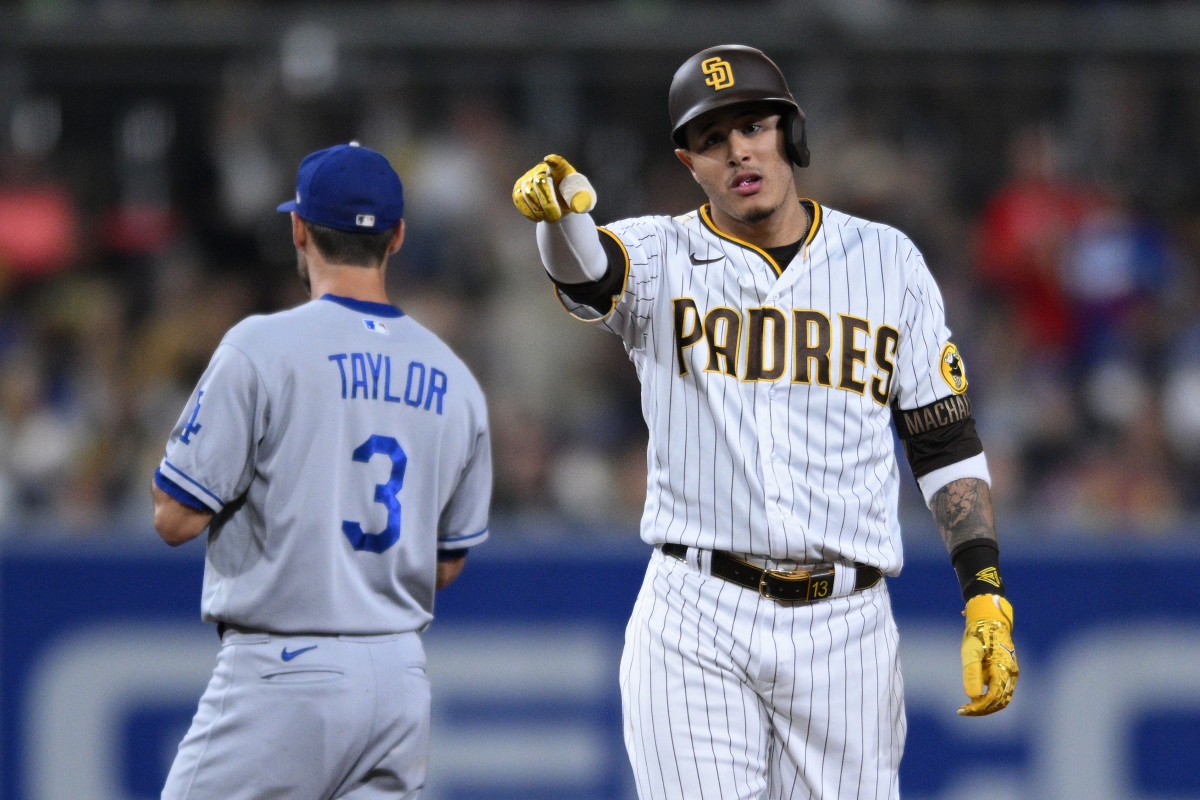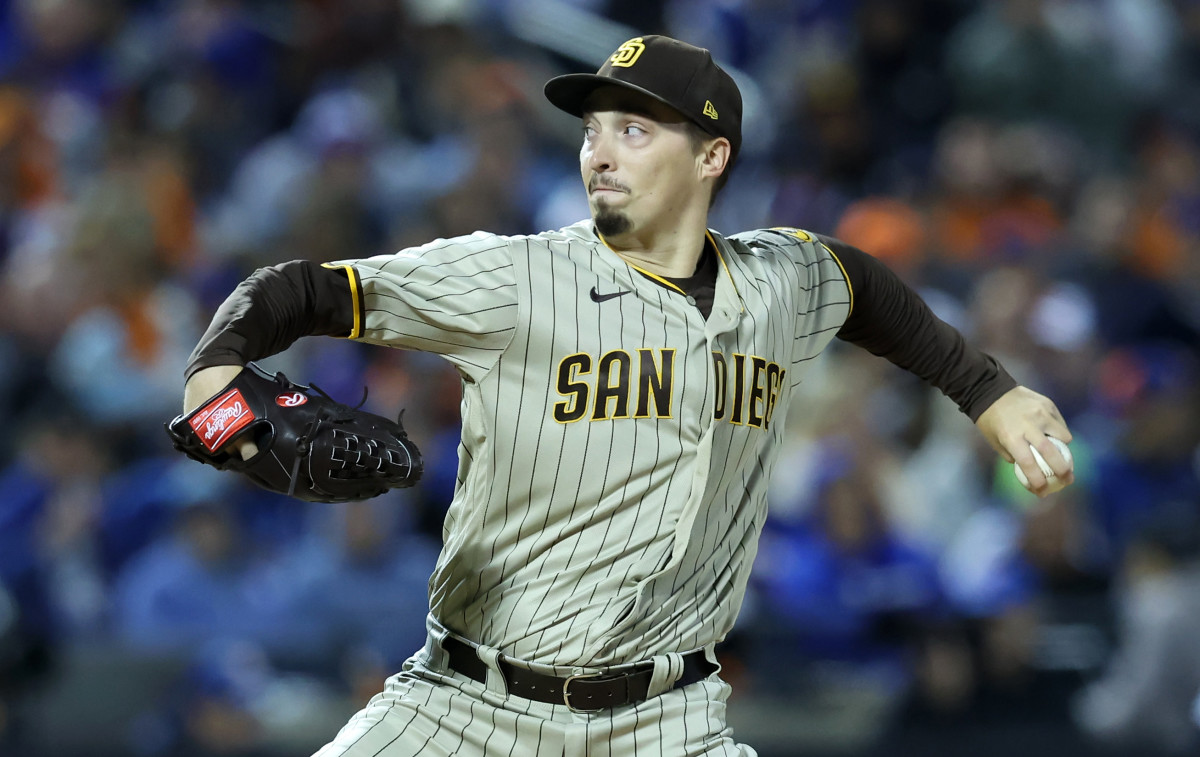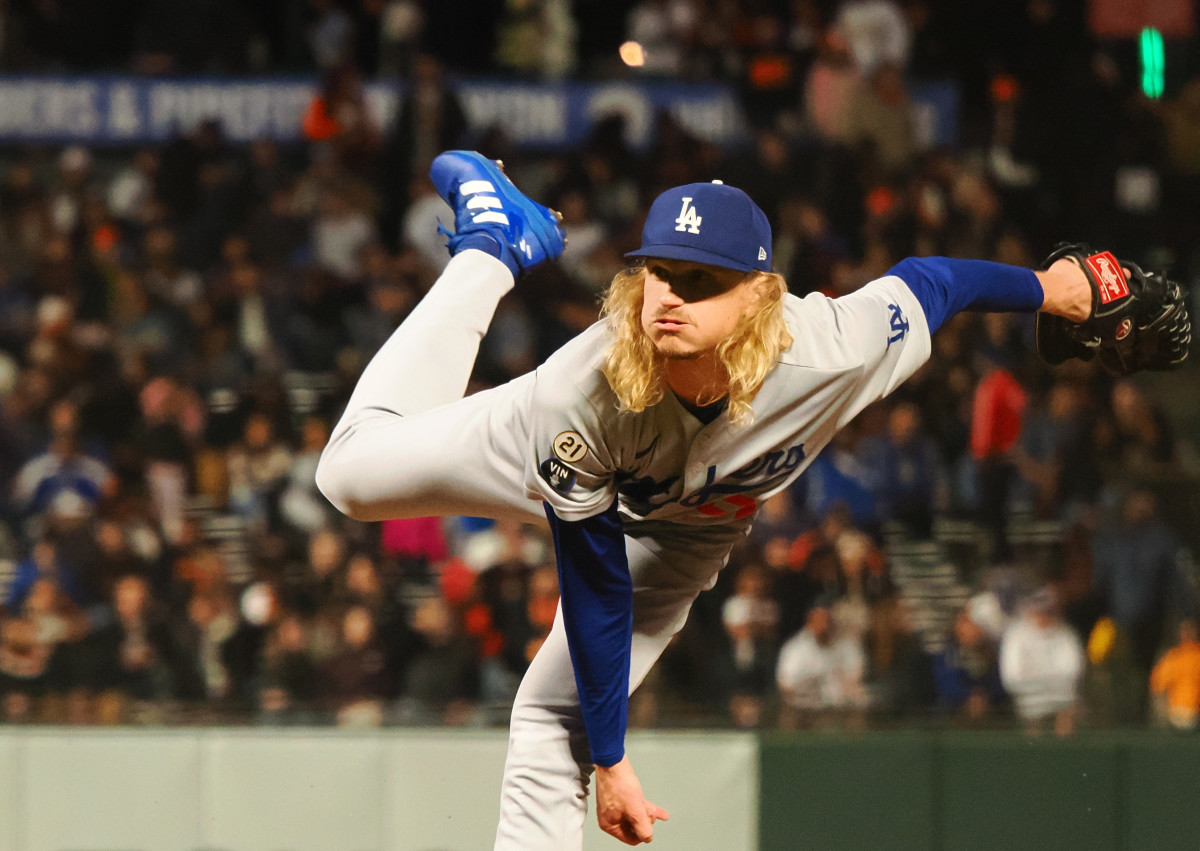Three Things That Will Decide Who Wins the Padres-Dodgers NLDS
The Dodgers and Padres have developed one of baseball’s most heated rivalries over the past few years, particularly since San Diego suddenly morphed to become a contender in 2020 in an attempt to halt Los Angeles’s National League West supremacy. But the on-field results have not matched the compelling story line surrounding these Southern California nemeses.
San Diego has won exactly one-third of its 48 regular-season matchups against Los Angeles over the past three years and was swept in the NL Division Series in its lone postseason matchup against the eventual World Series champions in 2020. In fact, the Padres haven’t won a season series against the deep-pocketed Dodgers since ’10—and this year’s team may be the best edition yet of the “dragon up the freeway.” (L.A. is just the fifth team in MLB history to win at least 111 games.) So how could the Friars have a chance against the Dodgers in this best-of-five NLDS, which they go into without their top three starting pitchers after using them in their wild-card round victory against the Mets?

Well, they’re certainly still the underdogs in this matchup, but there are a few different variables this time around. Here are three x-factors that should decide this series.
Can the Padres muster more against L.A.’s elite trio of lefty starters?
In 10 matchups this season against NL ERA champion Julio Úrias, future Hall of Famer Clayton Kershaw and successful reclamation project Tyler Anderson (Los Angeles’s projected starters for the first three games), San Diego never scored more than two runs against each southpaw. Overall, the trio combined for a 1.50 ERA against the Padres in 60 innings—utter domination over a fairly large sample size. And those statistics have not improved since the Padres’ deadline shopping spree: San Diego happened to face Úrias three times in September and managed only three runs against him in 19 innings.
The underlying stats have not been quite as dire for the Friars, with 45 strikeouts and 18 walks giving them a sliver of hope that some better batted-ball luck will bring better results. But they also averaged one home run every 15 innings against the trio, which doesn’t bode well in a modern playoff environment where the long ball is often the key to success.
San Diego hasn’t hit against lefties especially well this season, with its 103 wRC+ vs. LHPs ranking 15th in MLB and the second-worst among the eight remaining playoff teams (ahead of only the Guardians). While the Padres shouldn’t feel intimidated by the Dodgers’ rotation after getting through the Mets’ superior top three, it seems likely they’ll miss the services of suspended superstar Fernando Tatis Jr. more this round. Obviously, this would be a good time for Juan Soto to look more like he did with the Nationals, but with Soto sporting a career-worst .701 OPS against lefties this year, it’s more likely one of San Diego’s two other midseason offensive acquisitions (Josh Bell, Brandon Drury) comes through with a big hit in the early innings.
Watch MLB games live with fuboTV: Start a free trial today!
Can Blake Snell provide some length?

Perhaps no active pitcher has seen his ability to pitch deep into a game more scrutinized than Snell, the lone lefty expected to start for San Diego in this series (Sean Manaea’s season-long struggles have relegated him to bulk man duties). While with the Rays, Snell was famously pulled from a start against the Dodgers—as part of Tampa Bay’s strategy to minimize his time facing opposing hitters for a third time—in the decisive Game 6 of the 2020 World Series, despite shutting out Los Angeles with nine strikeouts through 5⅓ innings. The Rays went on to blow their 1–0 lead just two batters after Snell’s reluctant exit, and a narrative was born. It’s one that’s a tad unfair in an era when Tampa Bay’s handling of Snell is hardly unique—indeed, San Diego hasn’t stretched Snell much further in his two years with the club—though it certainly comes off as a cautious approach for a former Cy Young winner who’s in his physical prime.
Snell is not afraid to waste pitches trying to get hitters to chase while ahead in the count, so he’s probably never going to be seen as the modern version of a workhorse (he’s topped 130 innings only once in his career). He’s yet to see the sixth inning in any of his three outings against the Dodgers this season and has done so just three times in 11 career starts against them, including the postseason (though his career-high 7⅔ IP did coincidentally come against L.A. last August). He’s also only earned a win against the Dodgers once … and has been tagged with a loss only once, as he’s often done for the day by the time the deciding run is scored.
The Dodgers are MLB’s best hitting team against right-handed pitchers (122 wRC+), so it’s crucial for San Diego to take advantage of Snell’s time on the mound. (Los Angeles ranks eighth in the league with a 113 wRC+ against lefties.) He’ll likely take the bump for Game 3 on an extra day of rest at the beginning of what could be a stretch of three games in three days, if the series goes the distance. The 29-year-old lasted only 3⅓ innings—tied for his shortest start both this season and in his postseason career—on Saturday against the Mets while handing out six free passes in San Diego’s lone loss of the wild-card round. If the Padres are to pull off an upset and advance to the NLCS, it’s imperative for Snell to eat some innings and leave with a lead. And if he can exorcise some demons and last at least six strong against the Dodgers, nearly two years after he was lifted in the sixth against them with disastrous results, even better.
How will Los Angeles handle the late innings?
Twelve different pitchers recorded a save for Los Angeles this year, and that’s not counting key bullpen arms in Phil Bickford (4.72 ERA in 62 IP, second-most among Dodgers relievers) and Caleb Ferguson (1.82 ERA in 32 games), former closer Blake Treinen and a potential hybrid weapon in Dustin May. As of Tuesday morning, it’s yet to be determined whether Treinen (shoulder) and May (lower back) are healthy enough to be activated for the NLDS roster. If both (or perhaps even one) are, it seems likely Craig Kimbrel will be left off after losing the closer’s job in September.

All of this is to say it’s anyone’s guess who will be called upon by manager Dave Roberts if Los Angeles holds a lead in the ninth, let alone how things will work out beforehand. The Dodgers’ relief corps has undoubtedly been a strength this season, with a 2.87 ERA that is behind only Houston. But there is an unusual amount of uncertainty regarding who will reside in L.A.’s bullpen and what their roles will be, and how Roberts sorts out that situation will have a huge influence on whether the Dodgers advance to their sixth NLCS in seven years.
More MLB Coverage:
• Division Series Predictions: Expert Picks for ALDS and NLDS
• Inside the Mets’ Clubhouse After the End of Another Fruitless Season
• The Biggest Pitching Trends and Oddities of the MLB Postseason
• Joe Musgrove Cl-EAR-ly Wasn’t Cheating
